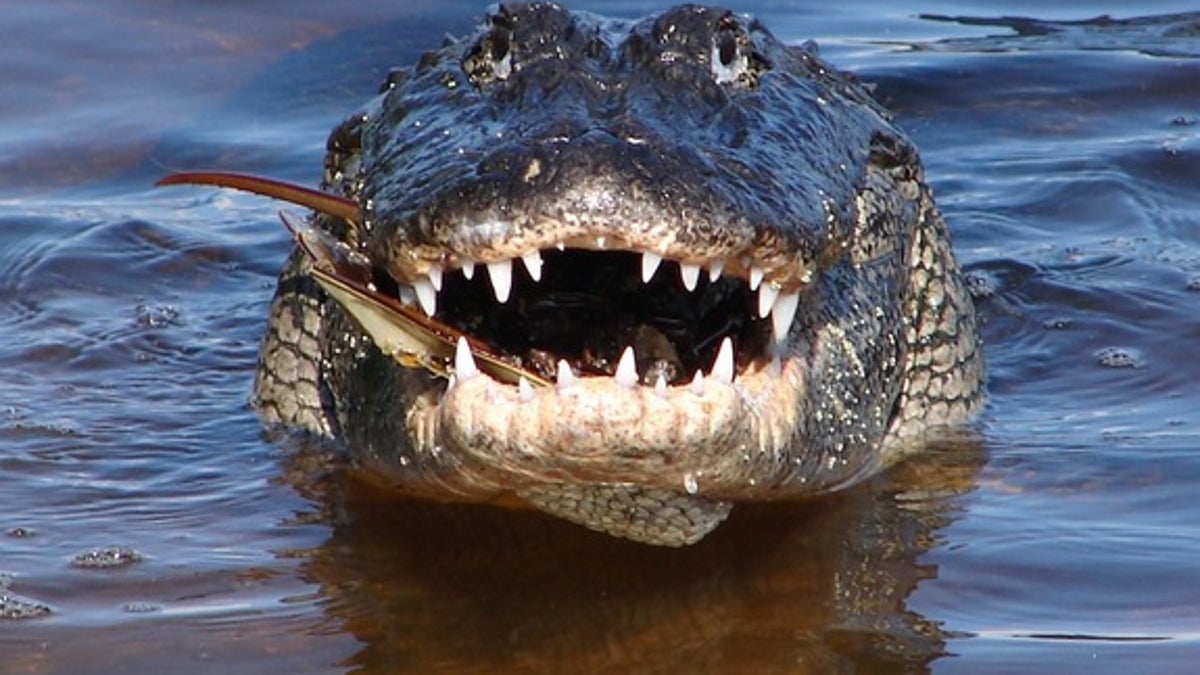
An American alligator's grin reveals rows of sharp teeth. (U.S. Fish and Wildlife Service)
Teeny-tiny bumps on the jawlines of alligators and crocodiles are more sensitive than human fingertips, new research finds.
The reptiles' sensitive "gently smiling jaws" (to quote Lewis Carroll) may enable them to both carry their offspring in the mouths with great gentleness and to snap at prey in a split second, researchers report today in the Journal of Experimental Biology.
"As soon as they feel something touch, they snap at it," study researcher Ken Catania, a biologist at Vanderbilt University, said in a statement.
[pullquote]
Catania was curious as to why crocs and gators sport tiny, dome-like bumps on their faces. These microscopic structures can help conservationists tell farmed reptile skin from that of endangered poached species used to make purses, shoes and belts. But no one knew exactly what the bumps were for. [Which Is Which: Alligators vs. Crocodiles]
Catania and his graduate student Duncan Leitch used a scanning electron microscope to get an ultra-close look at the bumps' structure in American alligators and Nile crocodiles, revealing sensitive nerve endings capable of detecting vibration and pressure. They then traced these nerve endings to their source, finding that they arise from the trigeminal nerve that protrudes directly from the skull. (Humans have a version of the trigeminal nerve, too, which enables facial sensations and carries the motor impulses we need for biting, chewing and swallowing.)
Next, the researchers turned to the function of this nerve network. Previous researchers had suggested the facial bumps might detect levels of salt in the water, so the scientists tried exposing Nile crocs to salt water while measuring for electrical signals in the nerves. They found nothing. But a touch sensitivity test, conducted by touching one of the sensory bumps with a tiny hair, revealed the bumps to be more sensitive than human fingertips.
The researchers found that crocs and gators can snap their jaws shut around prey within 50 milliseconds, a reaction time likely enabled by their super-sensitive skin. But these giant reptiles can be gentle, too, cradling their offspring in their mouths to carry them from place to place.
The researchers are now interested in learning more about what regions in the brain these facial nerves stimulate.
"Crocodilians are not an ancestor to humans, but they are an important branch that allows us to fill in key parts of the evolutionary puzzle for how sensory maps in the forebrain have evolved," Catania said.
Alligator Alley: Pictures of Monster Reptiles
10 Amazing Things You Didn't Know about Animals
Album: The World's Biggest Beasts
Copyright 2012 LiveScience, a TechMediaNetwork company. All rights reserved. This material may not be published, broadcast, rewritten or redistributed.
